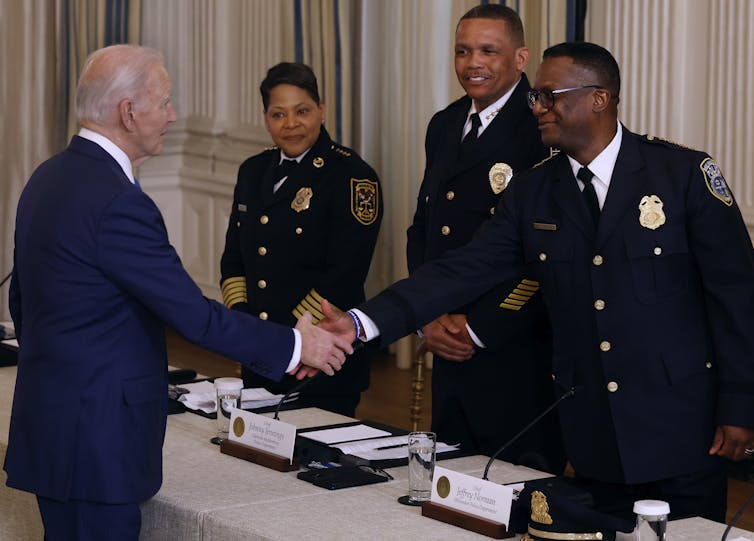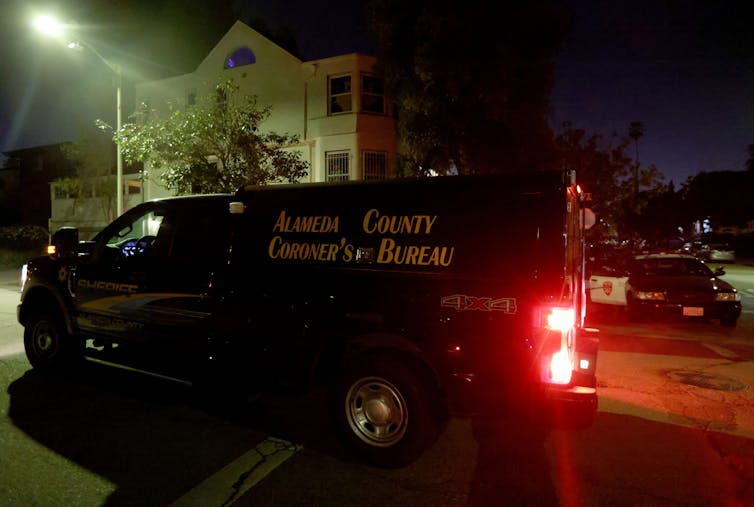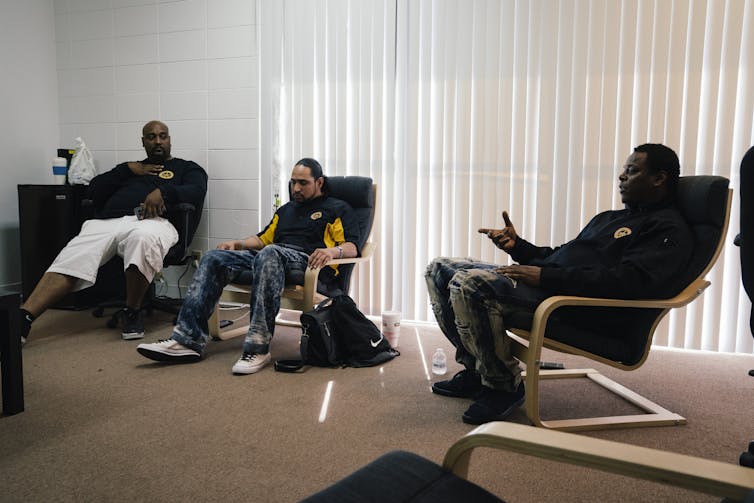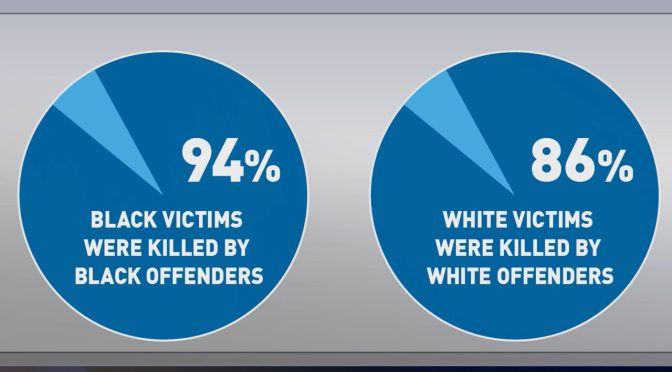EDITORIAL NOTE:
by Randall Hill
Much of the so-called Black-on-Black crime is directly related to centuries of institutionalized racism and racist policy that still persists today! Prior to the Supreme Court Decision of Brown v. Board of Education and Civil Rights legislation that resulted from the Civil Rights Movement, racism was overt and racists were direct. However, since racism is now technically illegal, it is practiced more covertly.
Covert racism is disguised and subtle, rather than public or obvious. Concealed in the fabric of society, covert racism discriminates against individuals through often evasive or seemingly passive methods. Covert, racially biased forms of discrimination are often hidden or rationalized with an explanation that society is more willing to accept. These racial biases cause a variety of problems that work to empower the suppressors while diminishing the rights and powers of the oppressed. It creates major obsticles which make if nearly impossible for some to escape generations of poverty. One example is how public education is funded based on property taxes. Well off communities tend to have better schools because more tax money is invested, however, students in poor communities often get trapped in underfunded and usually underperforming schools. Covert racism can't be easily proved or disproved and it can't be criminalize or deem unconstitutional and usually fall outside the bounds of the law. In fact, victims of covert racism often feels uneasy, excluded, ignored, silenced, rejected, marginalized, or exploited without necessarily knowing why.
The term Black on Black Crime is a form of covert racism. People commit crimes where they live, whom do you suppose is committing crimes in China or Russia? Racialized terms can be misleading. Since the United States is for the most part segregated, crime in black communities is most often commited by black people, for example, (90% of black murder victims are killed by black perpetrators) vs. White on White Crime (83% of white murder victims are killed by white perpetrators). However, with that said, because of the horrible legacy of racism, which includes psycological damage, homicide is the leading cause of death among young Black men.
Racist individuals and groups didn't simply fade away because civil rights legislation and Supreme Court decisions made racial discrimination illegal, they changed their strategies. Unfortunately, every major institution including banking/finance, education, government, health care, media, medicine, and most glaringly law enforcement have elements of covert racism that negatively impact African-Americans and other oppressed groups. In 2006, the FBI Reported how white supremacist had inflitrated law enforcement. Ten years later, in 2016, the FBI still could not determine whether racial bias in policing was an epidemic, even though common sense indicates it is. We can easily assume white supremacist have infiltrated each of society's major institutions. Therefore, I am often cautious about the covert intentions of so-called solutions, but I must admit that idea mentioned in the article below seems like it would have a positive impact.
MAIN ARTICLE
by Thaddeus L. Johnson, Georgia State University and Natasha N. Johnson, Georgia State University

After a historic spike in homicides in 2020, murder rates in most U.S. cities appear to be returning to pre-pandemic levels. This drop has sparked some public attention, as demonstrated during a meeting of police chiefs in February 2024 at the White House.
During the meeting, President Joe Biden lauded investments made in law enforcement and community anti-violence initiatives during his administration. In 2023, Biden said, the U.S. “had one of the lowest rates of all violent crime in more than 50 years.”
But the most striking fact about homicide in the U.S. has been largely overlooked during such meetings – Black Americans are murdered at nearly eight times the rate of white Americans.
Young Black men in inner cities are disproportionately affected. They are both the primary victims and perpetrators of gun assaults and homicides.
This grave reality does not mean Black people are inherently violent. Instead, it largely reflects their disproportionate experience of systemic barriers such as poverty and limited access to quality education, good jobs and affordable housing – all factors that research shows contribute to neighborhood violence.
Making matters worse are the high rates of illegal gun possession among young men in urban areas. This behavior is often driven by reasons beyond criminal intent and include distrust of the legal system and the perceived need for self-protection.
More people walking around with weapons raises the risks for minor disputes escalating into deadly encounters. Studies revealing a connection between increased gun carrying and a rise in gun-related fatalities highlight the dangers of ready access to guns.
Limits of tough-on-crime policies
To be clear, keeping Americans safe requires arresting and locking up dangerous offenders. But the problem of street violence transcends punishment strategies that emphasize more police, more enforcement of petty crimes and, ultimately, more incarcerations.
Such traditional, tough-on-crime responses fail to address deeper social issues and unwritten rules like the “street code” and the elusive American dream dictating daily life in many inner cities.
This street code discourages police cooperation and glorifies guns and violence as ways to resolve conflicts and gain respect. At the same time, the code encourages intimidation and swift retaliation against perceived threats or insults.

For many people in underserved communities, generational poverty and limited opportunities for upward mobility make crime a viable alternative to a system that seems rigged against them. When people are presented with few legitimate economic prospects, studies show that some turn to crimes such as drug-dealing and theft.
Despite being classified as nonviolent offenses, those involved frequently use violence to establish dominance or settle disagreements.
As scholars of criminal justice – one of us is also a former police officer of 10 years – we have found that one way to reduce crime and its harmful effects on communities is to develop strategies for at-risk individuals that offer a range of mental health and other professional services, including a monthly stipend.
It is no coincidence that young Black males, who are most at risk of gun violence, also have the lowest chance of escaping poverty.
According to the U.S. Bureau of Labor Statistics, 54% of Black men born in the poorest households end up in the lowest earnings bracket between the ages of 28 to 35, compared with 22% of white men, 29% of white women and 34% of Black women.
Such grim prospects, along with the relatively small group of offenders driving community violence, highlight the importance of targeted, holistic interventions.
Cash incentives
There is one approach that cities can consider – cash allowances for young Black men at greatest risk of committing gun violence.
Community-based initiatives like Advance Peace, a nonprofit agency focused on anti-gun violence, are addressing the economic pressures behind street violence and demonstrate the potential of providing people with guaranteed payments each month.

Launched in Richmond, California, in 2009, Advance Peace receives its funding from city contracts, federal grants and private donations.
Its programs offer participants as much as US$1,000 monthly for up to nine months. This stipend is conditional on meeting goals intended to steer them away from crime and violence, such as completing educational courses or finding jobs.
To address underlying emotional and behavioral issues, participants are also connected with round-the-clock mentorship by staff counselors for at least 18 months. Other services include cognitive behavioral therapy to help manage aggressive and impulsive tendencies associated with violence.
In addition, gang rivals are paired together during sponsored trips to foster dialogue and humanize one another.
In California cities implementing Advance Peace, such as Richmond, Sacramento and Stockton, shootings decreased from 2018 to 2021, and the overwhelming majority of participants have avoided both gun violence and new arrests.
Research on these California cities shows that neighborhoods with Advance Peace programs saw a 5% to 52% decrease in the number of victims of gun violence in 2021 compared with 2018.
Black men under 35 also were involved in 15% to 42% fewer shootings across the three cities.
Solutions that address root causes
Opponents of the monthly stipend, including former Sacramento County Sheriff Scott Jones, have criticized the idea of paying people to obey the law as “cash for criminals.” They contend that this approach suggests compliance requires monetary incentives rather than personal accountability. While understandable, we believe these criticisms are misguided.
The objective is not to pay off potential offenders but rather to stabilize tumultuous lives and open avenues for personal and professional growth. It is challenging to develop these initiatives without stigmatizing recipients or creating dependency. But the harsh truth is that we either pay now or pay later.
Besides the loss of life and the trauma caused by gun violence, its massive economic burden extends beyond victims and their families. Recent estimates reveal that the financial toll of gun violence in the U.S. amounts to a staggering $557 billion annually, surpassing the gross domestic products of countries such as South Africa and Denmark.
These costs include immediate and long-term medical bills, legal expenses and lost earnings from victims’ death or disability.
To this point, another analysis found the potential shootings prevented by Advance Peace programs saved cities $67 million to $268 million in associated costs in 2022. But direct payments to participants offer only temporary relief.
To effectively break the cycle of violence, comprehensive efforts are needed to improve access to quality education, jobs, housing, health care and community development in inner cities. Initiatives that address community violence without tackling its underlying causes is akin to treating symptoms while ignoring the root causes of a disease.
Strategically investing in equal opportunities for upward mobility can create a society in which young Black men are less likely to turn to guns for empowerment and self-preservation. We view this investment as a small price to pay for the promise of safer cities.![]()
Republished with permission under license from The Conversation.

